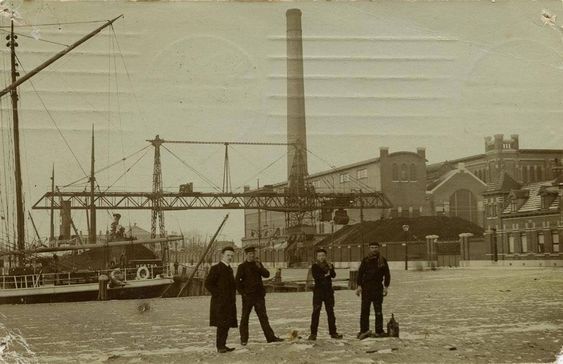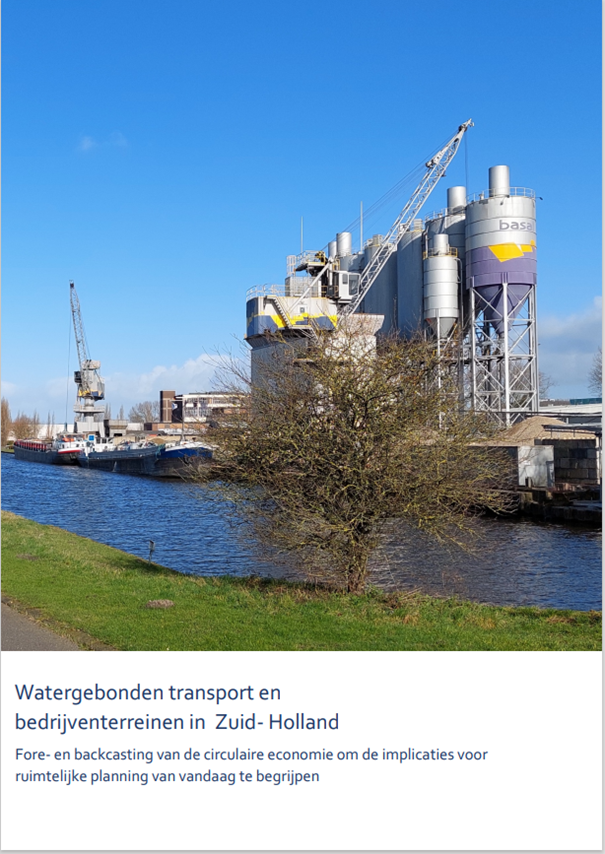Municipalities and provinces should take care of their water-connected business parks, especially those in or near cities. The Netherlands has a unique network of waterways that are ideal for transport. These locations are important for the development of the circular economy and require good connections to the underlying business parks in the region.
Dealing with space demands is a complex spatial puzzle for many municipalities and regions. However, they would be wise to start thinking now about the future demand for space from businesses that focus more on local consumption and production as a result of the transition to a circular and ‘strategically autonomous’ economy.
On behalf of the Province of Zuid-Holland (NL), TU Delft’s Faculty of Architecture and the Built Environment and the Vereniging Deltametropool have joined forces to map the space requirements of the circular economy. In particular, they are focusing on the activities that will have to take place on business parks that use water transport in the future.
Platform31 spoke to the lead author of the study, Karel Van den Berghe, lecturer in Spatial Planning and Economics at TU Delft, about the approach and results of this study.
What was the question you started this study with?
“In the province of Zuid-Holland, business locations are under increasing pressure. Especially in urban municipalities, business areas are being transformed into residential areas or mixed residential and business areas. Waterfront locations are particularly attractive in the eyes of municipalities, home-seeking citizens and property developers. At the same time, there is a growing awareness that sufficient space for manufacturing and production companies is important for a number of reasons, including in or on the outskirts of urban areas. One such reason is the transition to a circular economy. The province has asked us to visualise as concretely as possible what this demand for space will look like and where. In this way, we can argue which existing and possibly new business parks should be protected from conversion or redevelopment”.
How did you approach the study?
“The research is characterised by a unique combination of ‘forecasting’ and ‘backcasting’. That is, we look from today’s situation to ‘tomorrow’, but also from ‘tomorrow to today’. To do this, we have used various data analyses. For example, using LISA data, we were able to map ‘topographically’ which current circular manufacturing activities take place where.
We also looked at the current and future potential of water-related sites based on ship depths (CEMT navigation classes). We also took into account the effects of climate change: for example, it is likely that river channels will be shallower in the future due to a decrease in glacier melt water. Using AIS vessel data, we were able to see ‘topologically’ the extent to which water-based business parks actually use water transport.
Because the future depends on many factors and is therefore difficult to predict, we are working with four scenarios that are more or less similar to the recently published scenarios from PBL that the Netherlands used in the 2050 exercise. We call this ‘backcasting’. Based on interviews with experts, we concluded that the importance of waterborne transport will increase in the coming decades anyway. The question is therefore not whether, but rather to what extent. This depends on how the global economy will orient and evolve in the coming years (how much deglobalisation will there be?), and on developments and whether the labour market will remain tight or not”.
What specific circular activities/locations have you studied? Can you give a concrete example?
“We used five different categories: manufacturing, logistics, bio-based, construction and circular. For these we used SBI codes. For the SBI codes that fall under circular, we used recent definitions from PBL and Erasmus University. These circular SBI codes are not perfect and are sometimes adjusted, but they still give a good picture of what is happening. Our analyses show that there are important waste processing companies in Zuid-Holland. Certainly in the short to medium term, as we move towards a fully circular Netherlands in 2050, such functions will become more important.
The province has 617 (now 618, but our data is from earlier years) industrial estates. Our analysis revealed different ‘types’ of business parks. One example is the large-scale, supra-regional activities in the Drechtsteden, which are mainly concentrated around shipbuilding. Regional activities such as waste processing are more likely to be found in places like the Spaanse Polder in Rotterdam and in Alphen aan den Rijn, and urban activities such as car garages in the Binckhorst or Schieoevers Delft.
In the study, we were able to visualise how the business park network currently looks based on ship movements. This gives us some interesting insights, such as which locations act as hubs in the network. For example, the Schielandse Hoge Zeedijk in Gouda and the Groote Lindt in Dordrecht are considered to be hubs in this network.
Why is water-based transport so important for the circular economy?
“At the moment it isn’t. In fact, some circular water-bound business parks use little or no water-based transport. However, we can assume that water-based transport will be essential for circular material flows in the future. This is certainly the case in a heavily built-up area like Zuid-Holland.
What are the specific lessons for the province of Zuid-Holland?
“We distinguish two distinct areas in the province of Zuid-Holland: on the one hand, the port of Rotterdam and the ports around the Drechtsteden. These are unique locations in the Netherlands and could be developed into modern hubs for bio-based fuels, the offshore industry and the biochemical industry.
In this part of the province, it is particularly important to improve the links between the waterfront sites and the business parks behind them, so that even more companies can benefit and so that it can play an even more central role in the future circular network. However, it is important that the future navigability of the waterways and the extent to which this will affect the choice of water transport continue to be closely monitored.
In the other parts of Zuid-Holland, the main issue at present is the preservation of space for urban, smaller-scale manufacturing industry. Here, too, there are many circular challenges. Especially as we have also found that a major challenge will be the shortage of hands. We also know from other research that it is therefore important to have workplaces in close proximity to residential areas – but preferably not mixed, if we are talking about the slightly higher environmental category – and then you soon come to the water-based business parks that are under pressure today.
What lessons can you pass on to other provinces or municipalities in the Netherlands?
“Municipalities and provinces should be careful with their water-related business parks, especially those in or near cities. The Netherlands has a unique network of waterways that are very suitable for various forms of transport. It would be a pity not to use such sites for the circular economy. Waste processing is a particular activity that benefits from this. To make this logistics process as efficient as possible, careful clustering will be needed. At the same time, these sites must be multimodally accessible.
Finally, it is important for municipalities and provinces to carefully examine which specific sectors and companies want to establish themselves in their region, what they need, and to critically examine to what extent this matches their desired (circular) profile”.
This article Watergebonden bedrijventerreinen: cruciaal voor de circulaire economie in Zuid-Holland – Platform31 | Kennis en netwerk voor stad en regio first appeared (in Dutch) on the Platform31 website, August 14, 2023.
Picture: Schiehaven (NL)
Waterbound transport and industrial areas in the province Zuid-Holland (NL): Fore- and backcasting the circular economy to understand the implications for spatial planning today
The central question of this study was: which existing and possibly new business parks in the province of South Holland are important for spatially protecting from redevelopment in the light of several important transitions, such as the circular economy?
Van den Berghe, K. B. J., Tsui, T. P. Y., Iliopoulos, G., Papadimitriou, C., Arrindell, A., Bonte, T., Fritzgerald, T., & Nefs, M. (2023). Watergebonden transport en bedrijventerreinen in Zuid- Holland. Fore- en backcasting van de circulaire economie om de implicaties voor ruimtelijke planning van vandaag te begrijpen.

